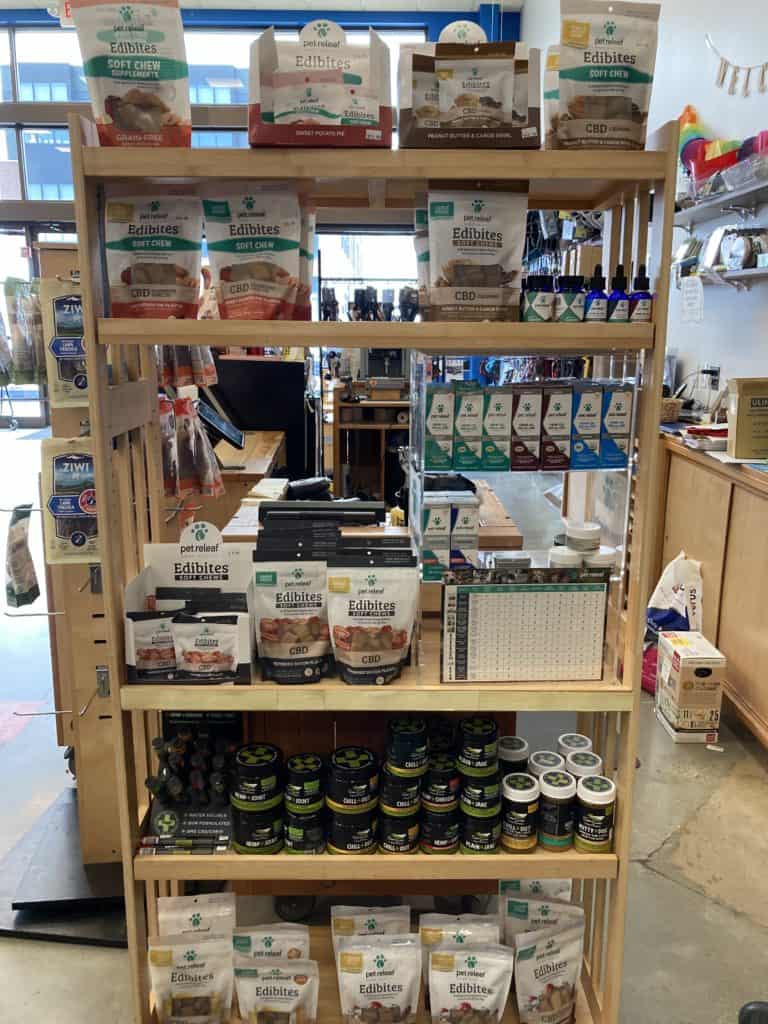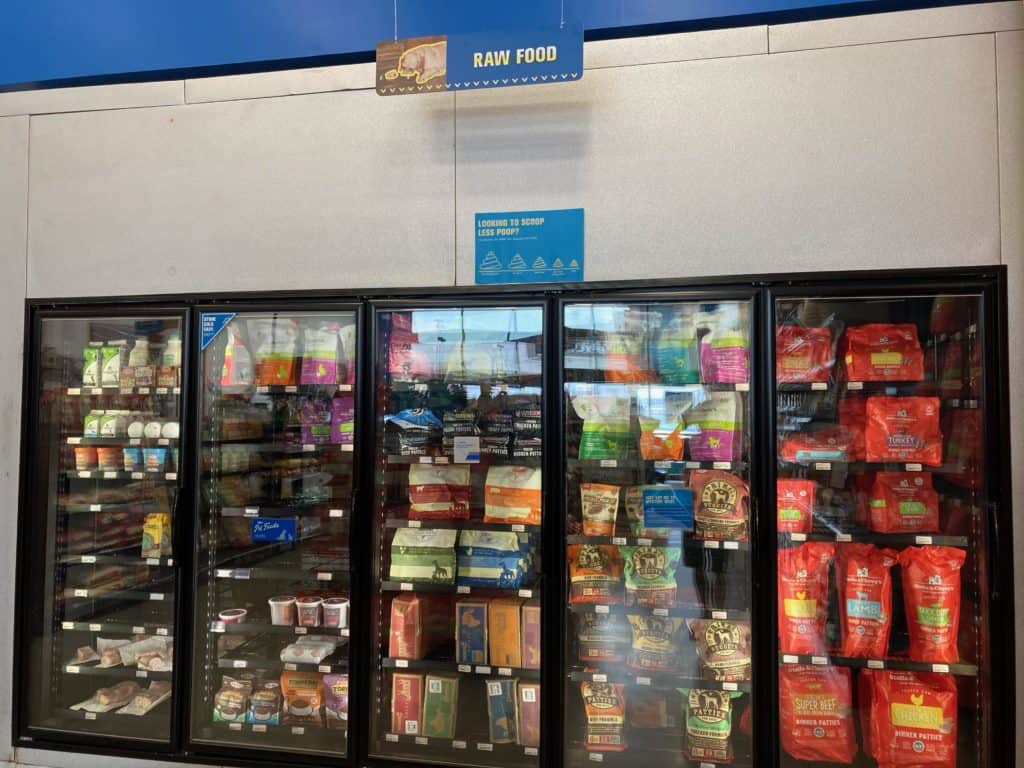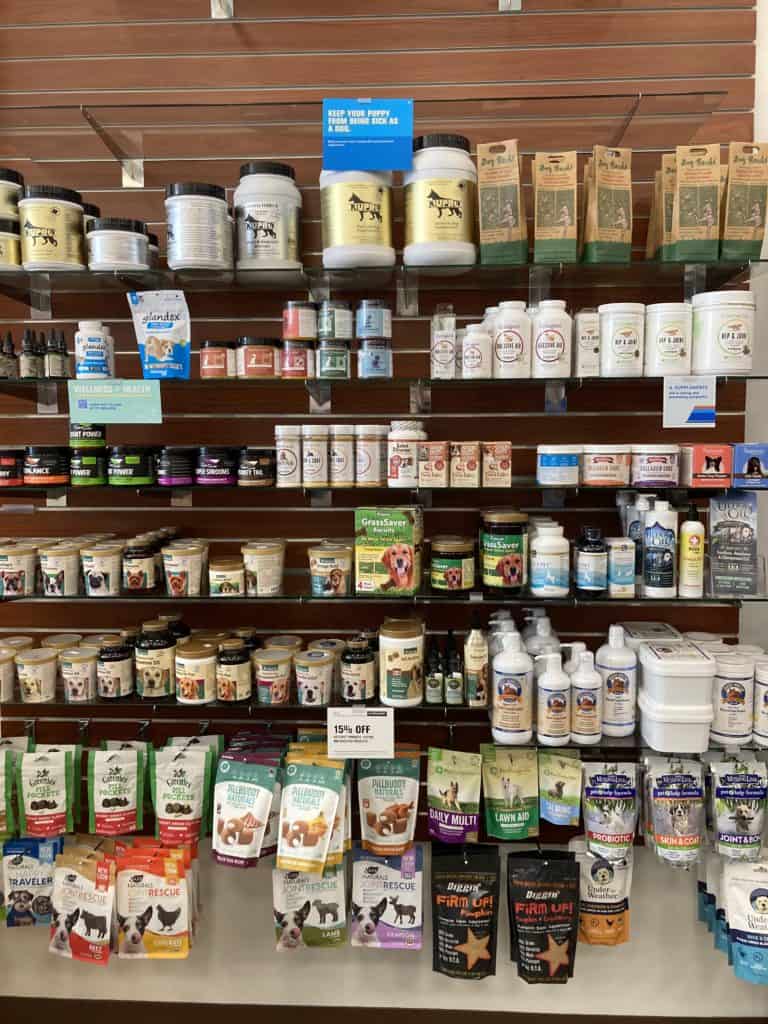Modern Pet Care

The Rising Costs of Loving Our Pets
By Steve Adams
Pets can be an amazing addition to our lives. They provide psychological and physical benefits, from companionship, love and a sense of responsibility to endorphin-boosting laughter and exercise. In the age of social media, they even inspire many of us to become semi-professional photographers, with their poses and stories filling Instagram pages.
Given this bounty of benefits, it should come as no surprise that, according to the American Pet Products Association (APPA), a whopping 70 percent of U.S. households, or 90.5 million homes, own at least one pet. APPA reports that 69 million households own at least one dog and 45.3 million at least one cat, followed by fish (14.7 million), birds (9.9 million), small animals (6.2 million), reptiles (5.7 million), and horses (3.5 million).
That’s a lot of animals to care for.
It’s unsurprising that many pet owners spend big money on their precious ones—going far beyond the standard stuff offered at your local PetSmart or Petco, devoted owners buy their pets the latest and greatest toys, treats, and foods—sometimes fancier than what we buy for ourselves.
At Loyal Companion, a specialty pet services shop in Annapolis, supervisor Rachel tells CBM Bay Weekly, “Business has been steady, despite the pandemic, and it’s clear that customers are eager to learn more about and try whatever new food or supplement might make their pet feel or live better. From raw food to CBD, this makes sense, because just like humans don’t like eating the same thing every day, dogs don’t either, and just like humans are accessing the diverse benefits of CBD, so are their pets.”
Modern-day pet owners are seeking out the best health care they can find in order to make their pets’ lives as long and pain-free as possible.
APPA estimates that Americans will spend a record $109.6 billion on their pets in 2021, breaking the previous record of $103.6 billion set in 2020. $32.3 billion will be on vet care and product sales—from surgery and routine visits to vitamins.
Patrick Emerson adopted Chapo, a Belgian Malinois, in December 2020 after the pandemic had him working from home in a less demanding role at his company.
While Emerson says he doesn’t have a specific pet care budget and is “better off not doing the math” when it comes to what he spends on increased rent, doggie daycare, food, toys, and vet care, “getting a dog is a decision that should not be made lightly. You’re taking on a huge responsibility, so I don’t understand how the well-being of one’s dog could not be important. And although I do think about the cost before I take Chapo to the vet, I’m far less stubborn about avoiding the doctor for him as I am myself, so I’ll always opt for trying to do whatever I can to make him feel better.”
Like Emerson, Gayil Pearlman decided to adopt Roxy, a pit bull mix, from the Anne Arundel SPCA in January due to the isolation created by working from home. She estimates that she spends a little over $800 a month on food, treats, toys, blankets, dogwalkers, and pet insurance, but says that cost isn’t an issue when it comes to her dog.

“Roxy was a huge challenge when I first brought her home,” says Pearlman. “She had spent her formative months in a shelter and needed a lot of love, patience, and training. I spent eight weeks with marks and bruises all over my body and no small amount of damage to my home. However, after a lot of dedication, commitment, and perseverance (by both Roxy and myself) and the help of Upward Dog Training, Roxy has become the ‘good girl’ she so desperately wanted to be when I first brought her home.”
In light of this shift in how we care for our animals, the U.S. veterinary industry has expanded to offer our pets many of the same diagnostic and therapeutic services that their humans enjoy—and much of it is happening right here in Chesapeake Country.
Chesapeake Veterinary Referral Center (CVRC) in Annapolis offers services rivaling those of Anne Arundel Medical Center. CVRC’s lengthy list of diagnostic tools and special services includes CT and MRI, ultrasound, cardiology, oncology, internal medicine, ophthalmology, radiology, and neurology, while its surgical offerings include arthroscopy, laparoscopy, thoracoscopy, and minimally-invasive fracture repair. It also offers the latest in dog and cat rehabilitation services and cutting-edge equipment, from an underwater treadmill to a hyperbaric oxygen chamber.
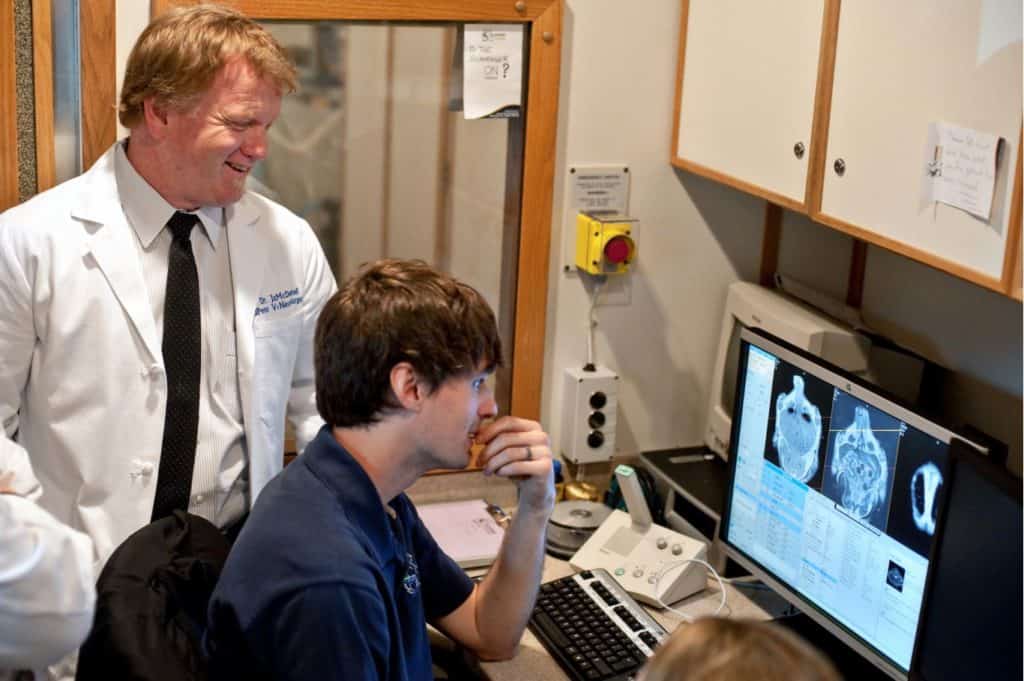
“Our clients seem more willing to pursue both surgical and minimally-invasive treatments than they were 10 years ago, and they are also more interested in pursuing post-operation radiation therapy, chemotherapy, and rehabilitation,” says Dr. Krista Evans, CVRC administrator and surgical director of Chesapeake Veterinary Surgical Specialists. “The number of cases we see has increased dramatically since the start of COVID as well, so it’s pretty safe to say many people are prioritizing their pets’ health and comfort more than ever.”
Health and comfort is also the focus at Canine Fitness Center in Crownsville. Founded in 2002, the center was opened after a vet recommended that the owners’ dog, Shadow, follow an exercise regimen including swimming, in the hopes of staving off surgery for a torn meniscus. Maury and Lynne Chaput, Shadow’s owners, could not find any place offering aqua-exercise for dogs within 50 miles—so they decided to create it. Their state-of-the-art facility offers swimming, acupuncture, and massage to dogs recovering from surgery or dealing with chronic pain.

Laurel Matthews praises Canine Fitness Center for her dog’s recovery. “When one of our dogs, Meesha, needed rehabilitation from elbow surgery and a year-round facility for swimming, I remembered reading an article about the Canine Fitness Center and decided to give it a try,” Matthews says. “Meesha rehabbed her elbows successfully, but we kept taking her and another one of our dogs, Yager, for swimming every Thursday for fun for many years.”
Matthews and her husband rescued Yager, a 12-year-old pit bull mix, and Pippit, a 6-year-old Staffordshire terrier, after their previous dogs passed away. They provide them with plentiful treats and toys, including a monthly Bark Box order and dog board games, because “for us, our dogs are our children.”
“We do whatever we can to not only keep them safe and healthy but also provide a great quality of life,” says Matthews. “Seeing them happy makes us happy. We take them to Ocean City every other weekend in the summer and many other times throughout the year to swim, enjoy the beach, and even paddleboard and kayak. They’re only here for a short time, and we do not want any regrets.”
It’s a sentiment that epitomizes what being a “pet parent” is about—treating your pet like family and doing whatever you can to make them feel and live better.
Pat Mernin adopted her 13-year-old Havanese, Maggie Moo, after her daughter and granddaughter persuaded her that working from home and having them to dog-sit whenever she traveled meant that it was a great time to get a dog. Despite a scary situation—Maggie Moo’s bladder was perforated by a vet trying to get a urine sample during her checkup, leading to terrible pain and multiple days and nights in the emergency room —Mernin found a new vet, whom she visits twice a year, and says that any expense that keeps Maggie Moo healthy and happy is well worth it.
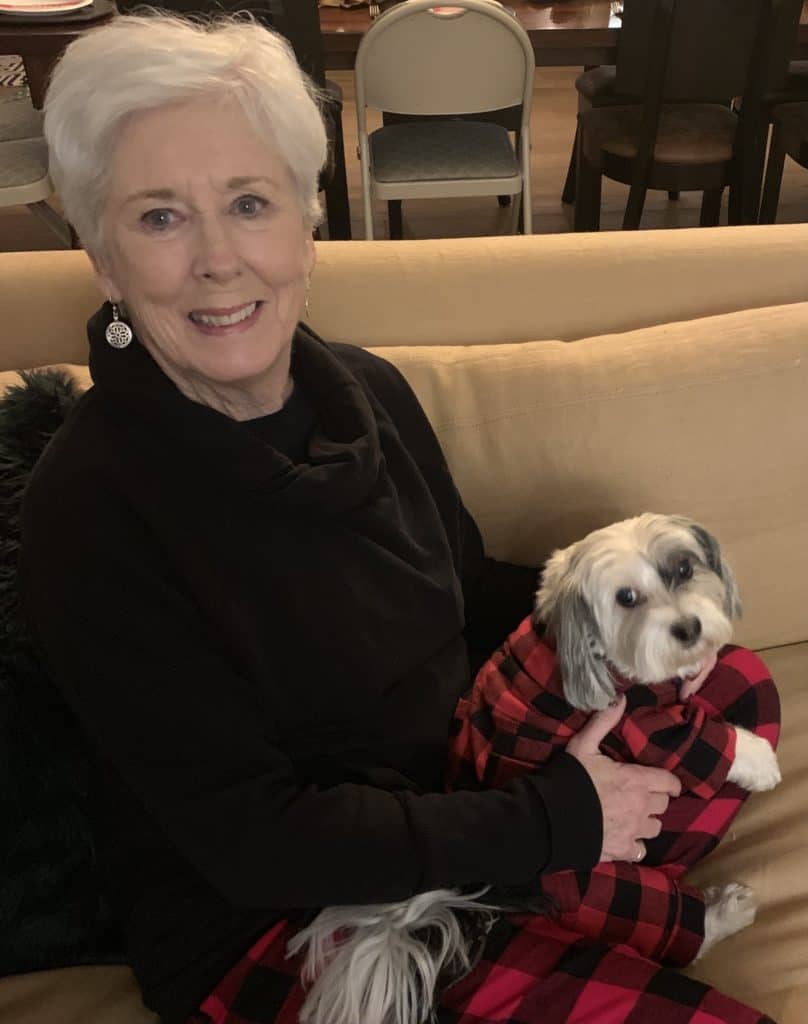
“I’m Maggie’s favorite person and she’s my favorite pet, but it’s great that my granddaughter loves her and begs to hang around with her, too,” says Mernin. “Maggie makes me laugh and is someone to talk to whenever I want—plus she never talks back!”
Even pet parents of larger animals admit to feeling responsible for the health and well-being of their pet.
Allison Akers began riding horses at age six and rode competitively on the University of Maryland Equestrian Team. She purchased Gibson, an 11-year-old ex-racehorse (also referred to as an “off the track thoroughbred”) in March 2017 after deciding that she’d been leasing horses long enough.
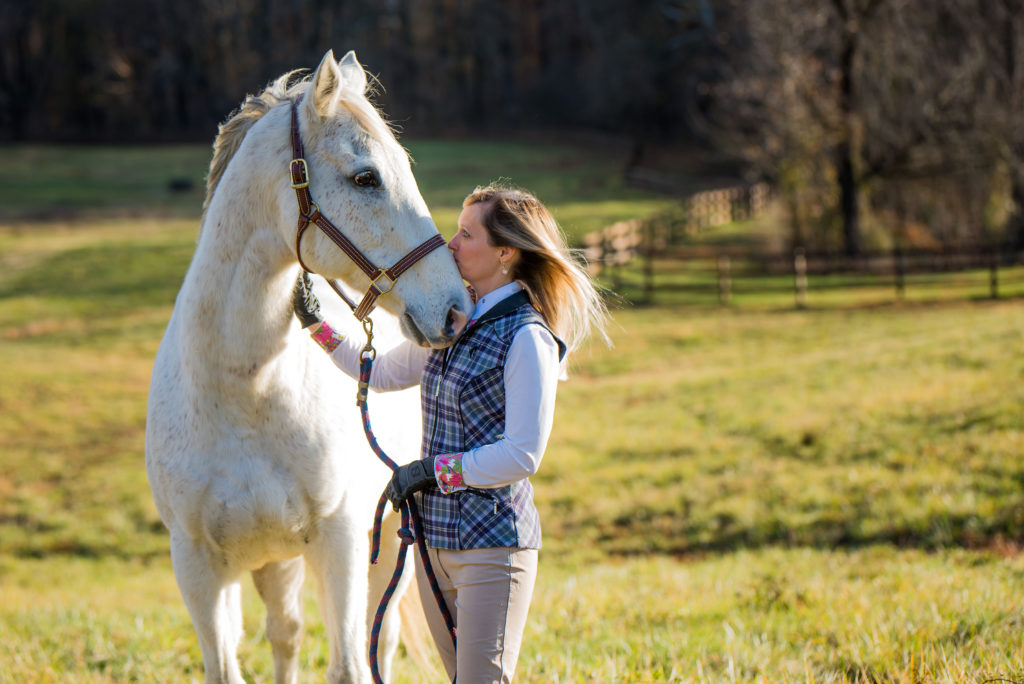
Along with keeping him fed and stabled, she pays for two on-site vet visits each year, for vaccines and dental “floating,” as well as a visit from a farrier every three to four weeks. She’s also invested in his treatment and rehab following numerous major injuries, but says that she knew what she was getting into. She saves for unexpected expenses related to his care.
“Some really challenging and lengthy injuries and rehabs have made the future look questionable at times, but thanks to the expertise and hands-on support of Dr. Morgan Dove, of Chesapeake Equine Veterinary Practice, and Dr. Shari Kennedy, with Southern Maryland Equine Veterinary Service, we are still out here riding together today,” Akers says.
“Why is his well-being so important to me? Because animals can’t speak. They rely on us to be shepherds of their health … so it’s important to be tuned into their behavior and cues, get to the bottom of the issue, and resolve it as best as possible. To do that I surround myself with knowledgeable people I trust, from vets down to my boarding barn owners, managers, and trainers. Horses are large, powerful, loving, gentle beings. The bond I have with my horse is unmatched and I made the promise to always be a responsible owner, through thick and thin, when I took him on so I will always stick by that promise.”
For Pearlman, taking care of Roxy is above all, her duty. “She is my responsibility; I chose to bring her into my life and my home, so it’s my job to care for, protect, and appropriately handle her – I owe it to her to ensure that she is comfortable, happy, and healthy.”
*****
I adopted Buddy, my 14-year-old Lab-pit-and-many-other-things mix, after spending years meeting many dogs through many Lab rescue organizations, then spontaneously driving to the Prince George’s County shelter and adopting the first one I saw on National Pet Adoption Day in 2017.
Buddy is not a fan of trips to the vet so I don’t immediately rush him there whenever whatever potential issues emerges, the vast majority of which turn out to just be a part of the aging process or eating something new– for example, a new skin tag or pimple, a slower walk up the stairs or around the block. However, like much of Chesapeake Country I’ll still make every trip to the vet and pay for every test if it means that Buddy might feel better and live better. And I’m grateful to live in a place that loves its animals, too.


